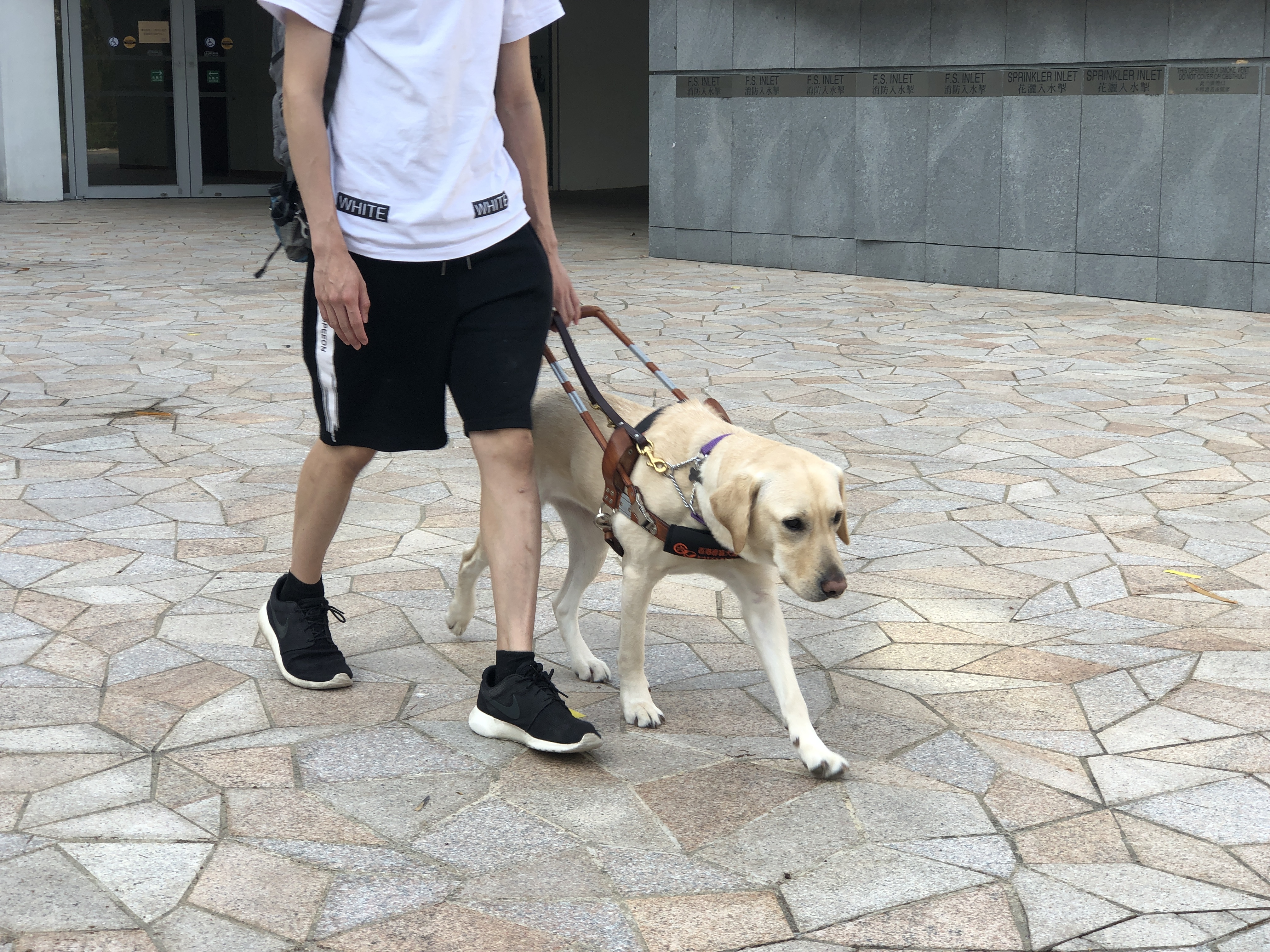
Home
Visceral Disability/ Chronic Illness
Visceral disability refers to a disability arising from diseases or respective treatment which may cause chronic health conditions including organ dysfunction, pain, fatigue, and limitations in daily functioning/activities.
General Difficulties Encountered by Students with Visceral Disability/ Chronic Illness
- Decreased efficiency in studying due to chronic pain and/or fatigue
- Limitations in participation in activities that may be physically demanding or that may easily cause fatigue
- Difficulties in mobility (e.g. writing, walking, manipulating equipment, etc.) due to impairment in strength, endurance, and/or coordination abilities
- Absences from classes due to medical appointments and/or changes in health conditions
Useful Tips for Supporting Students with Physical Visceral Disability/ Chronic Illness
• Inclusive Teaching:
1. Provide lecture materials prior to class to facilitate students’ preparation for class
2. Permit audio/video recordings of lectures to facilitate students’ revision/ learning after class
3. Provide allowance for class attendance if needed
4. Consider supplementary videos or materials as alternative options to field trips, if applicable
5. Provide reading lists and/or information about individual and group assignments as early as possible, if any of these involve locating and using resources in libraries or off campus
6. Discuss special learning and/or exam arrangements privately with students concerned
7. Acknowledge and show respect for diversity in learning needs
• Assignment & Assessment:
1. Consider alternative assessment modes, especially for those with functional or mobility difficulties
2. Consider extensions in assignment deadlines
3. Consider extra time and supervised breaks in quizzes/tests/exams if necessary
4. Permit the use of a computer/laptop in quizzes/tests/exams
5. Arrange a separate and easily accessible venue for quizzes/tests/exams to minimize distractions and stress
Reference
Visual Impairment
Visual impairment (VI) refers to a significant functional loss of vision that cannot be corrected by medication, surgical operation or ordinary optical lenses such as glasses.
Significant VI refers to loss of visual acuity (VA) and/or loss of visual field that makes it difficult or impossible for people affected to complete daily tasks. The level of vision loss can be classified into total blindness with no perception of light and low vision (mild to moderate and severe). In addition, colour-blindness is also considered as a form of VI.
General Difficulties Encountered by Students with VI
- Limitations in making eye contact during conversations
- Difficulties in identifying routes to different locations in a new environment
- Difficulties in identifying specified colour(s) for students with colour-blindness
- Difficulties in reading books, journals, examination papers or other materials in standard print
- May need longer time in reading
- Struggles in multitasking on a computer (e.g. during online classes where students may be instructed to do desktop research and group discussion at the same time)
- May suffer from headaches due to eyestrain
Useful Tips for Supporting Students with VI
• Communication:
1. Gain the student’s attention (e.g. by calling his/her name) before beginning a face-to-face conversation
2. Pause between sentences/phrases to ensure you have been understood before going on
3. Be specific when describing situations and giving directions (e.g. use landmarks – right, left, behind, etc. instead of giving indications that depend on sight – “here, there”)
4. Indicate the end of a conversation to avoid the embarrassment of leaving a person speaking when no one is actually there
5. Offer to guide the student by asking if he/she requires assistance but do not impose assistance if not requested
6. Guide the student who requests assistance by allowing him/her to take your arm just above your elbow; do not grab the student by the arm and push him/her forward
• Inclusive Teaching:
1. Prepare as much information as possible in electronic format which allows students with VI to adapt the information to formats that are accessible and suitable for them
2. Make required reading lists and course materials available early to allow sufficient time for students with VI to reproduce them in accessible formats
3. Verbalize what is written or presented on PowerPoints/blackboard/printouts; describe any charts, graphs or diagrams being used
4. Communicate in advance with the student whether he/she needs any assistive technologies in class
5. Provide oral feedback if feasible
6. Permit audio recordings of lectures to facilitate students’ revision/learning after class
7. Discuss special learning and/or exam arrangements privately with students concerned
8. Acknowledge and show respect for diversity in learning needs
• Assignment & Assessment:
1. Consider alternatives to those assignments and/or exams that may require extensive reading
2. Consider extensions in assignment deadlines
3. Consider extra time and supervised breaks in quizzes/tests/exams if necessary
4. Enlarge text or convert it to Braille for quiz/test/exam papers if required
5. Allow the use of a computer/laptop installed with assistive software and/or other assistive devices if required
6. Arrange a separate venue for quizzes/tests/exams to minimize distractions and noise
7. Provide oral instructions during exams
References
1. Information on Visual Impairment (Education Bureau, Hong Kong)
2. Information on Communicating and Supporting People with Visual Impairment (The Hong Kong Society for the Blind)
3. Inclusive Teaching for Students with Visual Impairment (Australian Disability Clearinghouse on Education and Training, Australia)
Knowing more about Guide Dog
Q1. Recently, you may encounter some CUHK students walking with a dog around the campus. Would you wonder why?
A1: The dogs are “Guide Dogs”. They are specially trained to assist students with visual impairment in attending classes and studying independently in the campus.
Q2. Can the Guide Dogs with their students be able to go anywhere they like in the campus?
A2: According to the Hong Kong Ordinances and the Food Hygiene Code by the Food and Environmental Hygiene Department, visually impaired students accompanied with Guide Dogs can enter any public places, including all canteens, school buses, classrooms, libraries etc.
Reference link:
Disability Discrimination Ordinance
Food Hygiene Code Prohibition of Animals on Food Premise
Q3. If I have a chance to meet with the adorable Guide Dog, what should I do?
A3: When you meet a Guide Dog in the campus, you should remember the “3 Don’ts” and “1 Do” rules:
Don’t disturb: Don’t make noises or gestures to catch the attention of the dog. Don’t pet or touch the dog without the permission of the user / visually impaired students.
Don’t feed: Don’t feed or induce the dog by food. Otherwise, you may distract the dog from what he is doing. When a guide dog is wearing the saddle of Hong Kong Guide Dogs Association or Hong Kong Seeing Eye Dog Services, he is “on duty”.
Don’t reject: Welcome the dog to enter all the public places.
Do offer assistance: When you see a visually impaired student with his or her dog getting lost, do ask if the person needs your assistance. If you’d like to know more about the dog, please ask for the consent of the visually impaired student.
Q4. What should I do if I want to know more about the Guide Dog?
A4: Currently, Hong Kong has two organizations that provide more information about the Guide Dog. You may visit the Hong Kong Guide Dogs Association Limited (HKGDA) or the Hong Kong Seeing Eye Dog Services (HKSEDS) for more details.



Copyright © 2023. Office of Student Affairs, The Chinese University of Hong Kong
All rights reserved.


